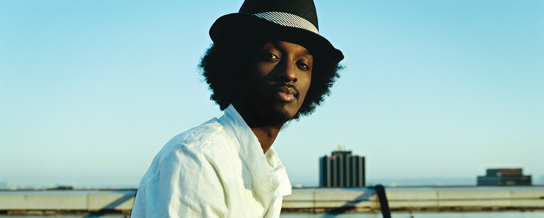The Handmade’s Tale
The scene at the Renegade Craft Fair in San Francisco belies its confrontational name: Combing […]

The Handmade’s Tale
The scene at the Renegade Craft Fair in San Francisco belies its confrontational name: Combing […]

The scene at the Renegade Craft Fair in San Francisco belies its confrontational name: Combing through the isles at the Fort Mason pavilion, you see mostly females in their 20s and 30s hocking knitted, sewn, and kiln-fired wares of all types. Upon closer inspection, there is something slightly different about the items on offer, something much subtler than the “renegade” tag suggests. “It seems to be all about context,” says If’N Books’ Deb Dormandy, in a clip from the upcoming documentary Handmade Nation. “My [handmade] books wouldn’t sell that great next to batik silk scarves, but if there’s, like, a batik silk scarf with a skull on it next to [my booth], I sell much better.”
It’s likely a similar scene at the Austin Craft Mafia’s meetings, where there’s nary a pair of cement shoes to be found (ballet flats, maybe), but there’s still a definite distinction to be made with today’s new breed of crafter/maker. “I see the use of the oppositional aesthetic as a way to distance the indie crafter from the more traditional craft scene,” explains Cortney Heimerl, Handmade Nation’s assistant producer and co-author of the forthcoming book of the same name. “‘Craft’ is such a problematic word. The young people that are involved in creating what people have come to refer as ‘the new wave of craft’ or ‘indie craft’ use very traditional methods–embroidery or pottery or knitting–but use very different themes and issues… They needed a way to separate one type of craft from another.”
Those themes and issues range from the aforementioned skulls to ones addressed by groups like Knitta, who take the “renegade” bit to heart. In the documentary, members of the Houston, TX-headquartered (but worldwide) collective are shown tagging buildings, lampposts, trees, and even stone scraps of the Great Wall of China with woolen cozies, transforming urban landscapes to rejuvenate their often drab steel-and-concrete aesthetics.
Though not all indie crafters are activists in the traditional sense, they do believe they’re shaping the way people shop, one stitch at a time. “It is a movement that is helping to change the face of consumerism,” offers Heimerl. (Which, as any quilter-provocateur will tell you, is political.) And that’s where the internet has come in: If you think the Long Tail theory provides a glimmer hope for the future of indie record sales, just think what it will do for punk macramé. What was once frowned upon as “women’s work” has grown into viable communities and self-made businesses, where buyers groups, online societies (sharing knitting- and small-business tips), real-life meet-ups, and direct sales have all flourished.
“Within the DIY community you will find trained academic artists, crafters who have day jobs and sew by night, full-time crafters who have left their day jobs behind, stay-at-home moms, and crafters who just make stuff for the sake of creating,” says Faythe Levine, director of the Handmade doc and co-author of the book.
“The underlying message of DIY itself is ‘you can do it,’” says Levine, who draws parallels between indie filmmaking and crafting. “Work with what you have, pool your resources, tap into your community, and make it happen. That is exactly what I did. I turned making a film into my craft–same message as before, different medium. The documentary has become my platform to show it is possible to have an art community that is about supporting one another and sharing ideas, that craft is approachable and all-inclusive.”
So all-inclusive that no one stares down their noses at enthusiasts of Bedazzling and Puffy Painted Fruit of the Loom sweatshirts?
“Of course not,” Heimerl replies.

